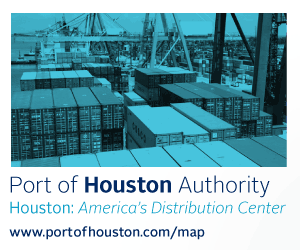|
By William DiBenedetto
No two supply chains are precisely alike, given the vagaries of length, complexity, technological capabilities and market forces at work — but what makes a great retail supply chain tick?
As one can glean from Gartner’s top supply chain list, which includes Amazon at the top, followed by McDonald’s, Unilever, Intel, Inditex, Cisco Systems, H&M, Samsung Electronics, Colgate-Palmolive and Nike in the top ten, there are many ways to reach the top. (You might ask where are Apple and Procter & Gamble, long-time denizens at the top of Gartner’s list? They are still around, but apparently are so dominant that Gartner now places them in a new "supply chain masters" category.)
So supply chain assessments are complicated, but there are some commonalities, including efficient operations, talent management, technology and data management, and multi-channel inventory management.
It also doesn’t hurt to have great products and reliable, collaborative retail logistics partners.
Gary Allen, Ryder’s vice president for supply chain solutions, addressed this question in a recent interview. "In our view the perfect retail supply chain centers around an integrated supply chain strategy, so one of the biggest complications that we see for our retail customers is to bring all the organizations together." It starts with sales and then works "upstream" with logistics and supply chain all the way through to manufacturing. "A best-in-class retail company can integrate all those pieces together and have alignment around common metrics and common goals."
One of the biggest complications stems "more from an internal organization aspect," Allen says. "We engage with our partners on continuous improvement practices."
In addition, the leading retail networks are very advanced in technology, and are starting to address omni-channel challenges through demand planning and order allocation. "Some retailers are certainly more advanced in IT than others. Those are the key themes that from our viewpoint define a best-in-retail supply chain."
Ryder says that modeling durable goods movements, such as household appliances, are the "next frontier" and an area of opportunity in retail manufacturing supply chains.
Thus the importance of supply chain innovation. "It’s one of our core values," Allen says. "If we don't continually improve to drive value year in and year out we are not going to be around."
|

That said, it’s not easy to continually drive value through innovation. For one thing, innovation means a lot of different things to different people, but for Ryder it means "bringing new capabilities that create and drive new value." Innovation, Allen asserts, stems from "collaboration internally across all of our associates and then externally across our partner companies as well."
The biggest trend regarding supply chain innovation involves a host of technology-related themes such as the Internet of Things, Big Data, asset tracking and location-based sensor technology. In addition, the modeling and analytical tools are getting much better, easier to use and more robust, Allen says.
Advancements in modeling and analytics also help achieve better levels of risk planning and management. "The tools are getting better to identify potential risky scenarios, including managing driver safety."
From an operational and execution standpoint, companies increasingly can identify service or cost issues that have implications on business growth, says Tom Kretschmer, general manager of Ryder’s retail and vertical consumer brands. "We continue to drive more automation and methods to ensure a predictable and reliable outcome."
Kretschmer notes innovation and effective risk management along the supply are key components of successfully managed collaborative relationships. He said the parties must:
- Execute well
- Operationalize innovations, and
- Have the courage and commitment within the group and the supply chain to ensure that "we are doing that things that drive value and services."
The key is to "measure the things that are important to our clients," he continues.
From Ryder’s perspective, an integrated supply chain is one that is collaborative, flexible, and transparent while keeping up with the pace of change in order to create value.
|




